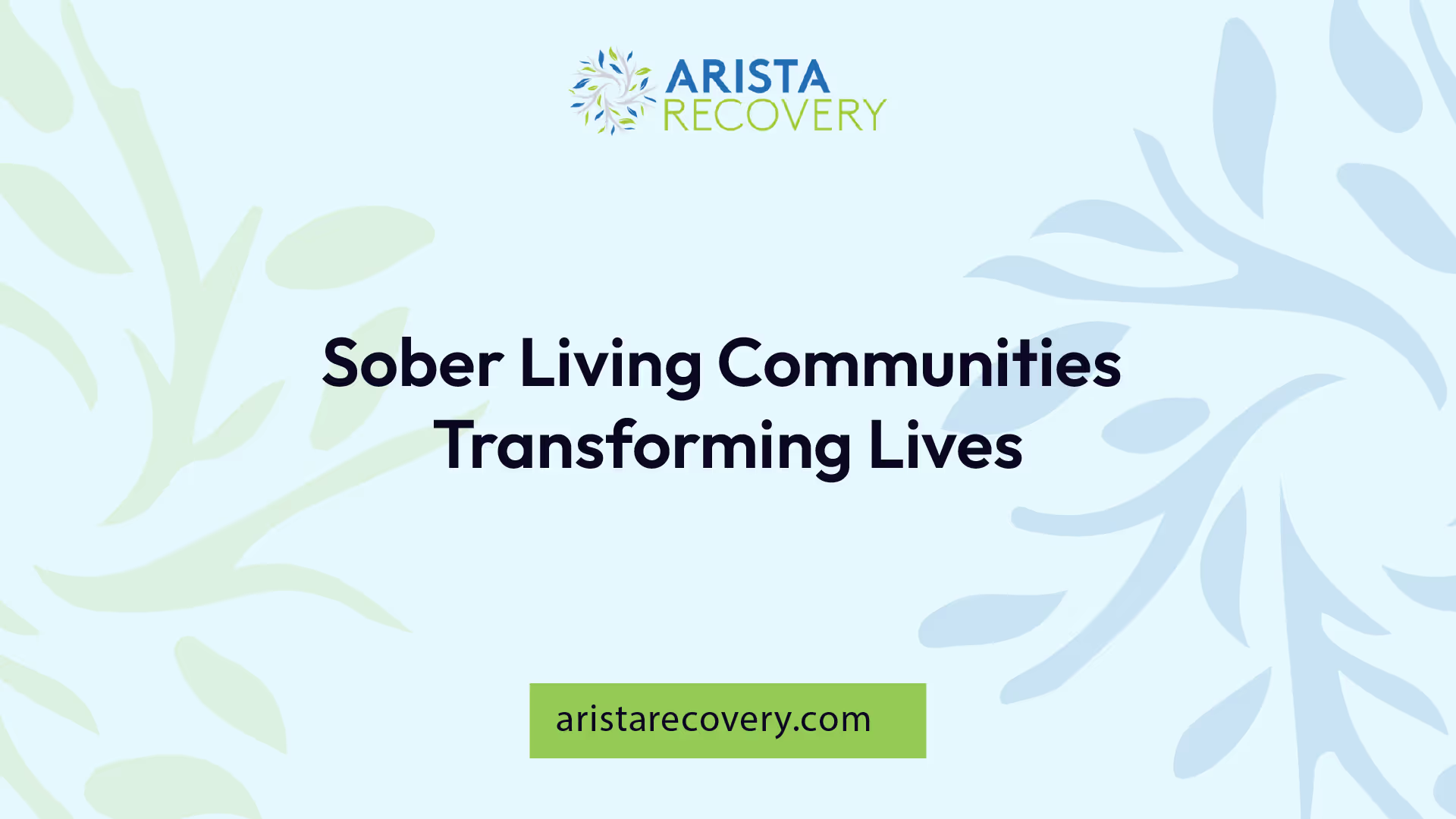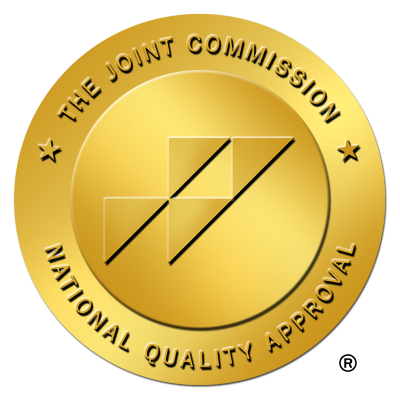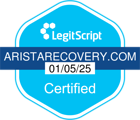Sober Living Communities Transforming Lives


Importance of Sober Living Communities
Sober living communities play a critical role in the journey of recovery from addiction, offering individuals the support and environment needed to maintain sobriety.
Role in Addiction Recovery
Sober living houses serve as a vital step toward recovery for many individuals battling addiction. These residences provide a safe and stable environment where residents can focus on maintaining their sobriety while receiving both professional and peer support. Research shows that residents in sober living environments demonstrate lower relapse rates and higher chances of maintaining employment compared to those without access to such resources [2].
The structured environments of sober living homes often incorporate house rules such as maintaining abstinence and participate in household activities, providing residents with a sense of responsibility and community. The average length of stay in these communities is typically around three months, allowing individuals sufficient time to develop new habits and routines that can help them in their recovery [3].
Supportive Environment
The supportive atmosphere found in sober living homes is essential for successful recovery. These communities encourage engagement in 12-step programs and participation in addiction recovery support groups, which foster connections among residents. Such relationships not only provide accountability but also create a sense of belonging.
In sober living homes, residents are encouraged to share their experiences and challenges, which can lead to therapeutic bonding and deeper understanding among peers. Living with others who are on similar recovery journeys helps to create a nurturing environment where individuals can support each other through the ups and downs of sobriety [4].
To ensure ongoing recovery, sober living homes may also connect residents with local resources such as AA meetings near me or online recovery groups. The combined effect of a structured and supportive living environment can significantly impact residents’ ability to sustain their sobriety and navigate life post-rehab.
Choosing the Right Sober Living Home
Selecting the appropriate sober living home is a crucial step in the recovery journey. Two significant factors to consider are location and professional support services.
Location Considerations
The location of a sober living facility can greatly influence an individual's recovery experience. Choosing a community close to supportive resources, such as outpatient treatment centers, support groups, and local recovery programs, can enhance the effectiveness of the recovery process. Factors to keep in mind regarding location include:
ConsiderationDescriptionProximity to SupportAccessibility to AA meetings near you and other recovery resources.Local EnvironmentA stable, safe neighborhood can contribute positively to mental well-being.Community ResourcesAvailability of recreational activities and sober social activities, such as sober social activities.
Living in an environment that withholds triggers and promotes positive influences can significantly aid in maintaining sobriety while providing a supportive community.
Professional Support Services
Access to professional support is essential for a successful sober living experience. The presence of trained staff, including certified addiction counselors, therapists, and psychiatrists, can provide tailored help that addresses the unique needs and challenges of individuals in recovery.
Service TypeDescriptionCounseling ServicesIndividual or group therapy sessions to work through personal challenges.Therapeutic ActivitiesPrograms that promote wellness, such as yoga or meditation.Medical SupportOn-site or affiliated professionals for medical needs.
Having these services available fosters a structured environment, which is critical for building a sober support network. This network can help residents feel connected and supported during a challenging time [1].
For ongoing support, individuals may also consider reaching out to online recovery groups and addiction recovery support groups to enhance their recovery journey.
Understanding Sober Living vs. Halfway Houses
When individuals explore options for recovery from addiction, understanding the distinctions between sober living homes and halfway houses is crucial. Both serve as transitional environments, but they cater to different needs and circumstances.
Key Differences
Sober living homes primarily accommodate individuals transitioning from inpatient substance use treatment programs. These facilities are characterized by a voluntary participation model where residents often continue outpatient treatments. Unlike halfway houses, residents typically enjoy more privacy and a higher level of professional support, catering to their specific recovery needs.
In contrast, halfway houses usually require residents to be court-mandated. The environment tends to be more regulated, with strict rules regarding curfews, visitors, and participation in rehabilitative programs. Many individuals in halfway houses might also engage in outpatient therapy or support groups like Alcoholics Anonymous, but professional treatment is not always mandatory [3].
FeatureSober Living HomesHalfway HousesEntry RequirementsVoluntary from inpatient treatmentOften court-mandatedLevel of PrivacyHigher privacyLess privacy, stricter rulesProfessional SupportOngoing outpatient treatment encouragedTreatment requirements varyPurposeTransitional to independent living with supportTransitional from institutions to independence
Structured Environment
Sober living homes emphasize a structured and supportive environment essential for sustained recovery. They create a setting where individuals can focus on building a sober lifestyle while developing new habits and routines. These homes offer residents the chance to participate in peer support meetings, attend addiction recovery support groups, and engage in activities that foster social connections and accountability.
On the other hand, halfway houses primarily serve as a bridge between institutional life and individual independence. They may include additional services such as mental health support and educational resources to help residents adapt to their new lives. Regular drug testing is often part of the structure, ensuring a commitment to sobriety during the transitional phase [4].
Choosing between a sober living home and a halfway house involves considering one's recovery journey and personal needs. By understanding the key differences and recognizing the structured environments they provide, individuals can make informed decisions that best support their recovery goals. For more support in finding local resources, consider looking into aa meetings near me or online recovery groups.
Benefits of Sober Living Homes
Sober living homes offer numerous advantages for individuals recovering from addiction. These benefits not only facilitate the recovery process but also provide a foundation for a healthier lifestyle moving forward.
Community Support
One of the most significant benefits of sober living communities is the strong support network they provide. These environments create a sense of belonging for individuals who may feel isolated in their recovery journey. They offer a shared experience, where residents understand the challenges and triggers each other face.
Sober living homes help individuals safely navigate tough spots, giving them a reliable support system during recovery. Residents commit to abstaining from substance use and often participate in house meetings and group activities focused on fostering social connections and emotional well-being. This structure helps individuals maintain accountability and build healthy relationships that can last beyond their time in the home.
BenefitDescriptionPeer SupportConnection with others facing similar challenges encourages shared experiences.Shared ActivitiesGroup outings and events foster camaraderie and promote sober socialization.Emotional SupportResidents can discuss their struggles and successes in a safe environment.
For additional resources, individuals can look into local addiction recovery support groups or sober social activities to further expand their support network.
Building New Habits
Sober living homes play a crucial role in helping individuals develop new habits essential for maintaining sobriety. These residences provide a structured environment that bridges the gap between inpatient treatment and independent living. Residents often follow house rules, attend regular meetings, and participate in outpatient treatment or 12-step programs, reinforcing positive behaviors.
Establishing a daily routine is important for individuals in recovery. It allows them to fill their time with productive activities that promote well-being, such as attending AA meetings near me or engaging in creative pursuits. Furthermore, living in a sober environment fosters discipline and reinforces the commitment to a sober lifestyle.
New HabitDescriptionRoutine DevelopmentEstablishing a daily schedule to promote structure.Goal SettingSetting short-term and long-term personal recovery goals.Healthy ActivitiesEngaging in physical activities or hobbies that support mental health.
The combination of community support and the opportunity to build new habits makes sober living homes a valuable option for individuals seeking long-term recovery solutions. For those interested in further engagement, online recovery groups can also offer additional support and resources.
Structured Living Post-Rehab
Sober living communities are essential in providing structured living environments for individuals transitioning from rehabilitation back to everyday life. This period can be challenging, and support systems play a vital role in sustaining sobriety.
Transition Support
Transitioning from a rehabilitation facility to independent living can be daunting for many individuals. Sober living homes offer a crucial support system designed to help residents implement the skills they learned during their recovery process. These environments foster the development of new habits and routines, making it easier for residents to apply lessons learned in rehab to their daily lives [4].
Key elements of transition support include:
Support ElementDescriptionStructureDaily schedules keep residents engaged and accountable.MeetingsAttendance at AA meetings near me promotes ongoing connection to recovery resources.House RulesAdherence to guidelines minimizes stress and promotes a focused environment.Peer LeadershipResidents gain insight and motivation from those who have successfully navigated similar challenges.
Studies show that residents of sober living homes are less likely to relapse and more likely to maintain employment compared to those without access to such housing [2]. This structured support encourages individuals to adapt to societal norms while reinforcing their recovery journey.
Support Network Development
Establishing a robust support network is vital for maintaining sobriety and navigating potential triggers and challenging situations. Sober living homes cultivate a community of peers who share similar goals and experiences, and this network becomes invaluable during difficult times.
The features that contribute to network development include:
Network FeatureDescriptionPeer SupportResidents bond over shared experiences, fostering friendships that provide emotional support.Regular Drug TestingHelps maintain accountability among residents to uphold a sober living environment [2].Interaction OpportunitiesOrganized sober social activities promote camaraderie and create a sense of belonging.Access to ResourcesConnections to online recovery groups and addiction recovery support groups further strengthen the support network outside of the sober living home.
The strong community within sober living homes provides individuals with the encouragement necessary to navigate their recovery successfully. By fostering meaningful relationships and reinforcing commitments to sobriety, these environments significantly enhance the chances of long-term recovery.
Sober Living Success Factors
In the journey to recovery, several factors contribute to the success of individuals residing in sober living communities. Two key elements are peer support and accountability systems.
Peer Support
Peer support is fundamental in sober living homes, providing residents with encouragement and understanding from others who share similar experiences. This support network fosters a sense of belonging, reducing feelings of isolation that often accompany recovery. According to Eudaimonia Homes, sober living homes create a structured environment where individuals can build these critical relationships.
Residents benefit from interactions with peers who have successfully navigated their own recovery challenges. These connections can lead to friendships that encourage shared activities, engagement in sober social activities, and involvement in support meetings such as AA meetings near me or online recovery groups. The communal experience enhances motivation and inspires residents to stay committed to their sobriety goals.
Benefit of Peer SupportDescriptionReduces IsolationConnecting with others in recovery fosters belonging.Encourages AccountabilityPeers motivate each other to stay sober.Shared ExperiencesResidents gain insights from those with similar journeys.
Accountability Systems
Accountability systems in sober living homes are crucial for maintaining a drug-free environment. These systems comprise house rules, regular drug testing, and curfew checks that residents agree to follow. According to research from Transformation House, individuals in sober living homes are less likely to relapse due to the structured environment and the presence of peer leaders and house managers who oversee compliance with rules.
These accountability mechanisms not only help ensure sobriety but also support residents in developing a sense of responsibility for their actions. This gradual transition to independence prepares them for a successful return to the outside world, often in conjunction with outpatient treatment programs that provide holistic support.
Accountability MethodsDescriptionRegular Drug TestingHelps maintain sobriety and identify issues early.Curfew CompliancePromotes stability and routine.House MeetingsEncourages dialogue about challenges and progress.
In conclusion, both peer support and accountability systems play an essential role in the effectiveness of sober living communities. This supportive framework assists individuals in recovery by creating an environment conducive to achieving long-term sobriety. For those seeking additional resources, exploring addiction recovery support groups can further enhance their recovery journey.
References
[2]:
[3]:
[4]:


